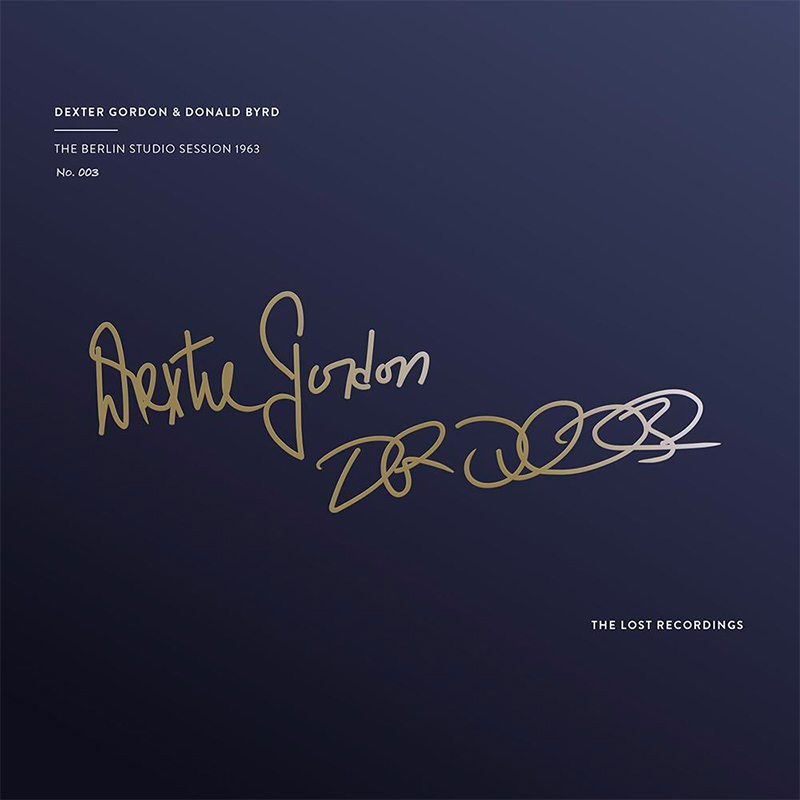Logowanie
Mikołaj - ten to ma gest!
Miles Davis, Horace Silver, Jay Jay Johnson, Percy Heath, Kenny Clarke, Lucky Thompson
Walkin'
20bit K2Super Coding - ale jak to brzmi!
Kasety magnetofonowe
Winylowy niezbędnik
ClearAudio
Double Matrix Professional - Sonic
najbardziej inteligentna i skuteczna pralka do płyt winylowych wszelkiego typu - całkowicie automatyczna
Dexter Gordon, Donald Byrd
The Berlin Studio Session 1963
By 1963, Dexter Gordon and Donald Byrd had become two of the leading lights of the Blue Note label, a gleaming showcase and an experimental laboratory for the evolutions and revolutions taking place in the small world of Afro-American jazz stemming from hard bop. Curiously, however, it was not until the autumn of that year that the two musicians made a recording together. Dexter Gordon had been recognized since the mid-1940s as a major stylist of the tenor saxophone and for having created the perfect synthesis of Lester Young’s laid-back rhythm and Coleman Hawkins’ sensuality by way of the then-flourishing bepob style (the two were the historical fathers of the instrument). Gordon subsequently went through a long purgatory of numerous, chronic addictions, but by the autumn of 1963 he had emerged from the ordeal and was experiencing a creative renaissance. Working with a new generation of musicians, he had regained his enthusiasm, his inspiration and his charisma. Donald Byrd’s talents were revealed in 1955 when he stood in for Clifford Brown to play with Art Blakey’s Jazz Messengers. Since then, he had been the much sought-after partner of the greatest musicians, including John Coltrain, Sonny Rollins, Thelonius Monk and Jackie McLean. He was considered one of the most gifted young trumpetists of his generation, as well as an original composer. Drawing on his personal universe with its subtle modernity, he strived to renew the language of hard bop using modality and bold orchestral experiments. Despite the ten-year age difference between Gordon and Byrd, despite their vastly dissimilar backgrounds, strivings and motivations, it was abundantly clear that both musicians made music rooted in the most genuine tradition. There was no valid reason for them not yet to have made a recording together. The short Berlin session on 14 November 1963 put the situation right, thanks to the initiative of Herb Geller, an American alto saxophonist and arranger, who had been living in Berlin for several months and who played in the RIAS Big Band (the group supported by Radio in the American Sector). Geller was well-known in the jazz community. His saxophone style was fluid and lyrical, a synthesis of those of Benny Carter and Charlie Parker. He also partnered with Chet Baker, Quincy Jones and Shorty Rogers, and made fine arrangements with the major orchestras of Claude Thornhill and Billy May. He was a respected representative of West Coast jazz, and it would be no exaggeration to say that the carefully-prepared recording session bore the imprint of his aesthetic bent. With Geller at the helm, the two special guests performed as part of a septet that featured a smooth mix of experienced American musicians, such as drummer Joe Harris, and talented young European soloists, including trombonist Ake Persson, who had caught the eye of Quincy Jones and Stan Getz, and was also a member of the RIAS Big Band at the time. The band leader demonstrated his orchestration, adding suave, elegant arrangements to a handful of varied compositions – the standards, “Fly Me to the Moon” and “Blue Orchids” – as well as his own “An Air for the Heir” and the original theme “The Dexter Byrd”, thereby ensuring they were both the medium and the showcase of the encounter between the top saxophonist and the top trumpetist. The session was a fine one in itself. Each musician displayed a sample of his improvisational talents in his own style and in the context. But it went beyond the preliminaries of allowing them the pleasure of getting to know and appreciate each other. There was another happy outcome: Gordon, obviously enchanted by the playing of his young colleague, invited him a few months later to play on their one and only shared record on the Blue Note label: the sparkling One Flight Up. Donald Byrd, Trumpet Dexter Gordon, Tenor sax Herb Geller, Alto sax Ake Persson, Trombone Heinz Kitschenberg, Guitar Jürgen Ehlers, Bass Joe Harris, Drums






























